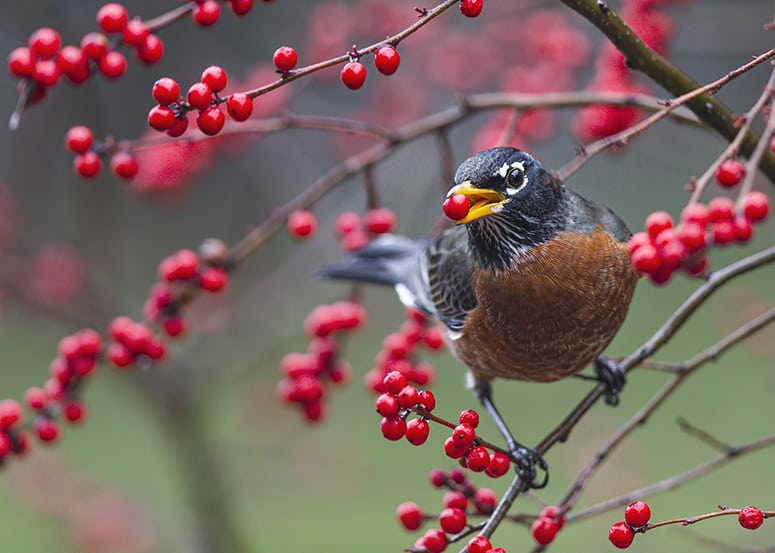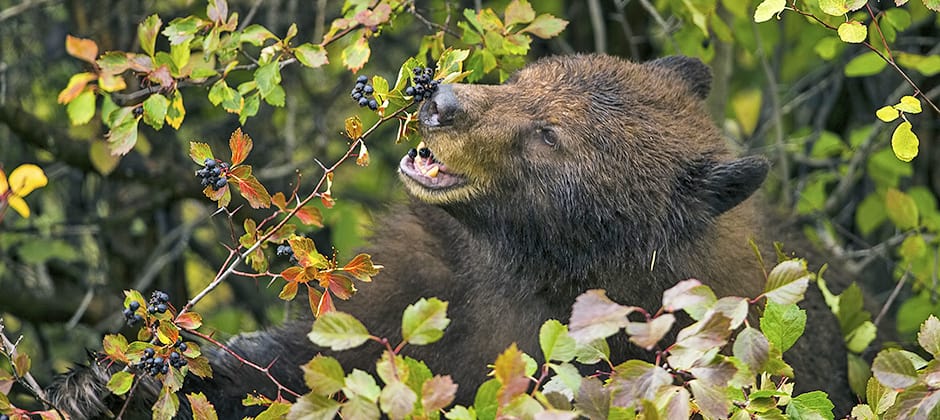Share this article
Can wildlife help plants keep up with the climate?
From birds to large mammals, many species are responsible for spreading seeds through their droppings, allowing plants to grow along wildlife routes. But as biodiversity declines and species’ ranges constrict, plants that rely on animals to act as seed dispersers will likely have trouble tracking with climate change.
After seeing how seed dispersal was disrupted by the arrival of a damaging invasive species in Guam, Evan Fricke, an ecologist at Rice University, wanted to look at a more global scale.
In Guam, the invasive brown tree snake (Boiga irregularis) wiped out seed-dispersing bird species. “The population of snakes had really exploded and by about 1990 had caused local extinction of nearly all forest birds on the island,” he said. For his PhD research, Fricke found that had consequences for plant species, too.
That was an extreme example, but Fricke knew seed dispersal was being disrupted in other parts of the world, yet researchers had only looked at local impacts.

An American robin (Turdus migratorius) eats a winterberry. Small birds like robins usually disperse seeds over short distances. Credit: Paul D. Vitucci
In a study published in Science, Fricke wanted to see how climate change may affect these processes around the world. “Plant species move to another area due to environmental changes or recover from disturbance like wildfire or deforestation,” said Fricke, lead author of the study. “But for this angle, we were looking at how they were moving to other areas to track climatic conditions for growth and survival.”
Fricke and his colleagues combed the literature for studies around the world on animals involved in spreading the seeds of fleshy fruits. They put together data on seed dispersal distances and on the impact of gut passage. “When an animal eats a fruit, is the seed destroyed at the end or does it actually turn into a seedling?” he asked.
Using machine learning, they generated predictions about seed dispersal by all bird or mammal species that eat fruits. “Because there are seed dispersers out there that are so rare, and every remote place hasn’t been studied directly, using the models we can make some strong quantitative educated guesses about how seed dispersal works,” he said.
But that was only the first step. The researchers wanted to find out how climate change and loss of wildlife biodiversity would impact these processes.
They modeled the distances plants would need to move in order to be in a place with suitable climate conditions. They also looked at how extinctions and contracted ranges of wildlife would reduce the spread of seeds. Comparing estimates of how much seed dispersal is happening in the world with estimates of how far those seeds would need to go to maintain the environmental conditions they need to grow, the researchers calculated a 60% decline in the number of seeds that could be dispersed far enough to track with climate change.
Some of the largest declines in seed dispersal function occurred in temperate regions like North America and parts of South America, they found.
Their research also showed that many endangered species, such as Asian elephants (Elephas maximus), wrinkled hornbills (Aceros corrugatus) and mountain gorillas (Gorilla beringei beringei), are important in helping seed dispersal track with climate change. “That’s yet another reason to support conservation of threatened and endangered species,” he said. But the findings also point to the importance of improving habitat connectivity and movement for wildlife. Those pathways can help support plants’ abilities to shift with the changing climate, he said.
That’s important not just for the plants but for the wildlife that depends on them for food and habitat. “Obviously, it’s a vicious cycle there,” Fricke said. “Plants rely on animals, and animals rely on plants. The disruption of those mutualistic interactions have the potential for cascading negative impacts on animals themselves.”
Header Image: A black bear (Ursus americanus) eats hawthorn berries. Large animals can disperse seeds over great distances, but large seed-dispersers are declining or extinct. Credit: Paul D. Vitucci








